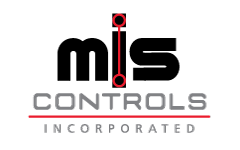
Demystifying Control Panel Terminology and Acronyms: A Clear Guide by MIS Controls
Control panels are the unsung heroes of industrial automation, orchestrating complex processes with precision. However, the technical jargon and acronyms associated with control panels can sometimes be overwhelming, especially for those new to the field. At MIS Controls, we believe in simplifying the complex. In this blog post, we’ll break down some common control panel terminology and acronyms, providing clear explanations and real-world examples.
-
PLC (Programmable Logic Controller)
A PLC, or Programmable Logic Controller, is a digital computer used to control industrial processes. Think of it as the brain of a control panel. For instance, in a manufacturing plant, a PLC can regulate the assembly line’s speed and ensure products are produced accurately.
-
HMI (Human-Machine Interface)
The HMI, or Human-Machine Interface, is the interface that allows operators to interact with the control panel. It can include touchscreens, buttons, and indicators. In a water treatment facility, the HMI enables operators to monitor and adjust the flow of water and chemical dosages.
-
I/O (Input/Output)
I/O stands for Input/Output. Inputs are signals or data received by the control panel, while outputs are the resulting actions taken by the control panel. In an HVAC system, temperature sensors (inputs) send data to the control panel, which then adjusts the air conditioning units’ settings (outputs) accordingly.
-
VFD (Variable Frequency Drive)
A VFD, or Variable Frequency Drive, controls the speed and energy consumption of electric motors. In a conveyor system, a VFD can adjust the motor’s speed to match the production line’s requirements, thus saving energy and optimizing performance.
-
MCC (Motor Control Center)
An MCC, or Motor Control Center, is a centralized enclosure that contains motor starters and protection devices. In an industrial facility, an MCC can manage multiple motors across various processes, ensuring they start, stop, and operate safely.
-
NEMA (National Electrical Manufacturers Association)
NEMA, the National Electrical Manufacturers Association, sets standards for electrical equipment used in North America. A control panel built to NEMA standards ensures it meets specific design and safety criteria required for its intended application.
-
UL (Underwriters Laboratories)
UL, or Underwriters Laboratories, is an organization that tests and certifies the safety of electrical equipment. A control panel with UL certification assures compliance with safety standards and regulations.
-
E-stop (Emergency Stop)
An E-stop, or Emergency Stop, is a safety feature that immediately halts machinery or processes in critical situations. It’s often represented by a big red button on control panels and is crucial in preventing accidents.
Conclusion
Navigating the world of control panel terminology and acronyms doesn’t have to be confusing. By understanding these foundational terms, you can better communicate, make informed decisions, and troubleshoot control panels effectively. At MIS Controls, we’re here to simplify the complex and provide you with control panel solutions that align with your specific needs. If you’re ever unsure about a term or acronym, don’t hesitate to reach out to us for clear and expert guidance.
